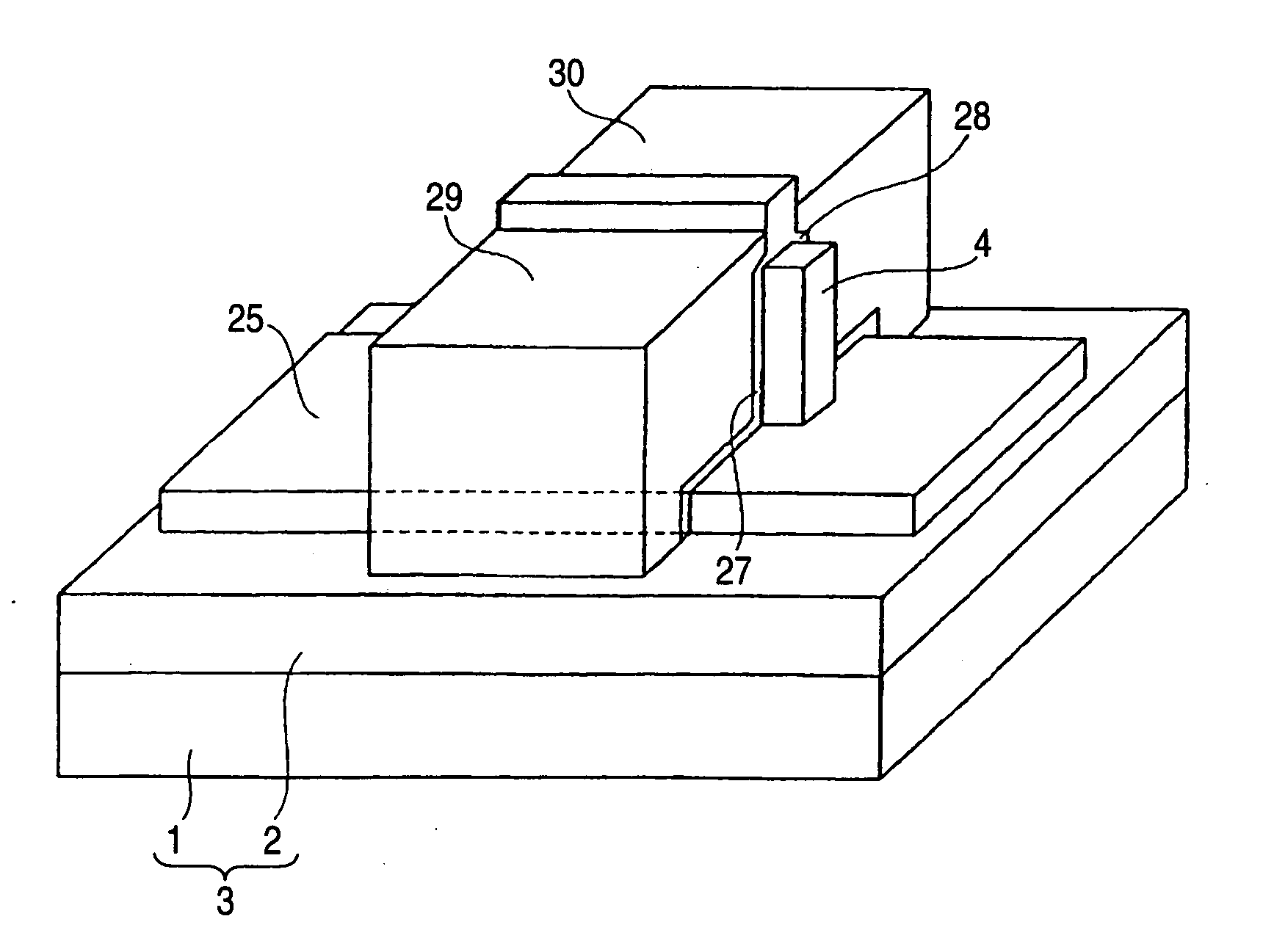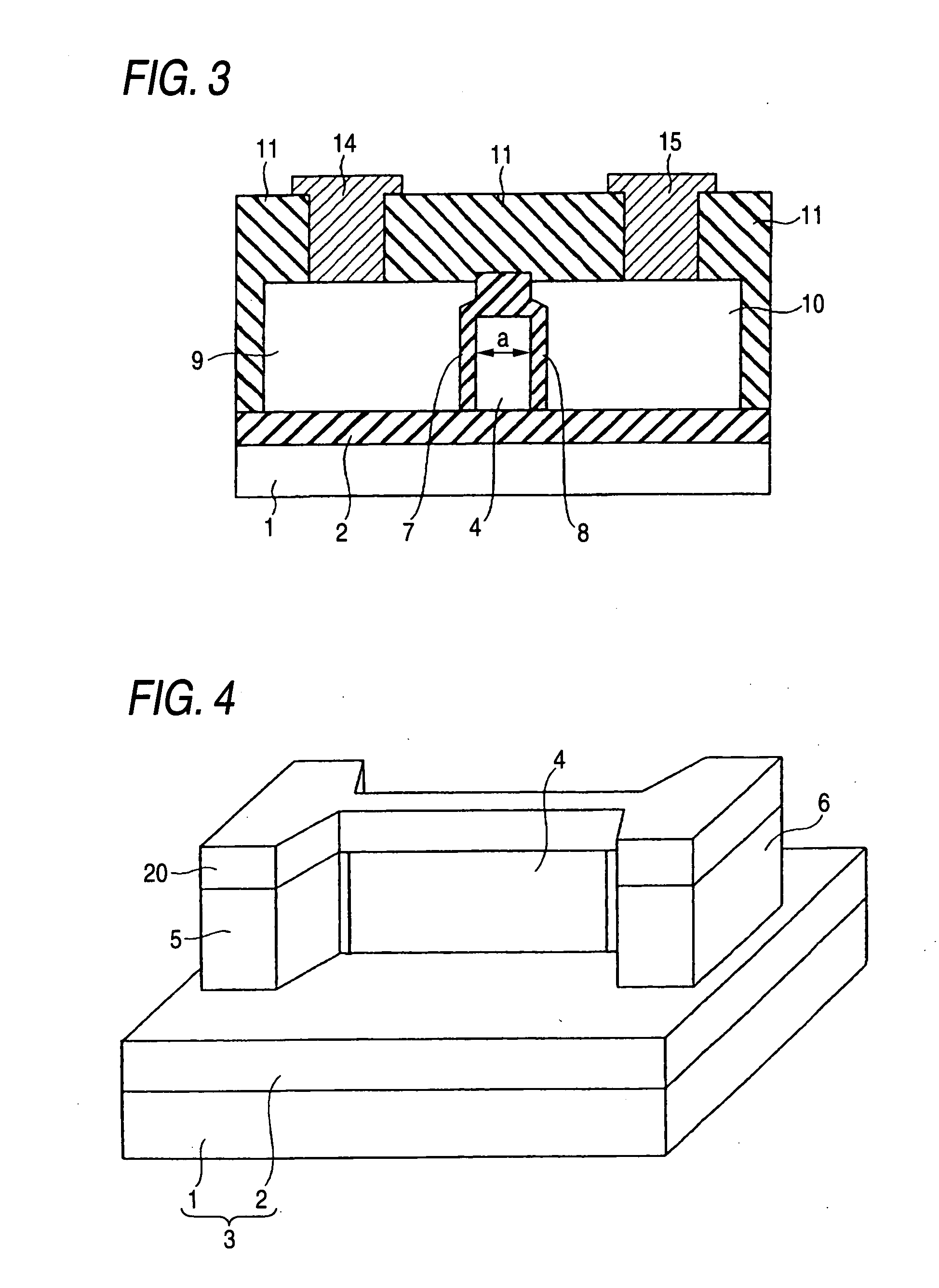Semiconductor memory device
a memory device and semiconductor technology, applied in semiconductor devices, digital storage, instruments, etc., can solve the problem of inability to improve the operation speed of the dram, and achieve the effect of preventing the shortening of the effective retention time of information and reducing the frequency of refreshing information
- Summary
- Abstract
- Description
- Claims
- Application Information
AI Technical Summary
Benefits of technology
Problems solved by technology
Method used
Image
Examples
embodiment 1
[0030]FIG. 1 is a diagram of a semiconductor memory device of an embodiment 1. FIG. 2 is a section view of the semiconductor memory device of FIG. 1 taken along the line A-A as viewed in the direction of the arrow. FIG. 3 is a section view of the semiconductor memory device of FIG. 1 taken along the line B-B as viewed in the direction of the arrow.
[0031] In FIGS. 2 and 3, an interlayer insulating film and wiring metals are shown. However, in FIG. 1, the interlayer insulating film and wiring metals are omitted in order to facilitate the understanding.
[0032] In the embodiment 1, an n-channel semiconductor memory device will be described as an example. In the case of a p-channel semiconductor memory device, the conductivity type is changed to the opposite conductivity type. In the case of a complementary semiconductor memory device having both the n- and p-channel types, semiconductor memory devices having the same configuration and different conductivity types, tat is, the p- and n-...
embodiment 2
[0065] A second embodiment of the invention will be described with reference to FIG. 7.
[0066] In the semiconductor memory device of the embodiment 2, the source / drain layer 6 is formed only at one end of the channel region 4. This is different from the semiconductor memory device of the embodiment 1, and the other configuration is identical with that of the embodiment 1. The identical components are denoted by the same reference numerals, and their description will be omitted. In the embodiment 2, the source / drain layer 6 may be a source layer or a drain layer.
[0067] The method of fabricating the semiconductor memory device of the embodiment 2 is identical with that of the embodiment 1, and hence its description is omitted.
[0068] Next, the operation of the semiconductor memory device of the embodiment 2 will be described.
[0069] First, the operation of writing information will be described.
[0070] To write information, a voltage is applied to the gate electrodes 9, 10 to cause ca...
embodiment 3
[0075] Next, a third embodiment of the invention will be described with reference to FIG. 8. The semiconductor memory device of the embodiment 3 is different from the semiconductor memory device of the embodiment 1 in that a source / drain layer 25 is not formed at the both ends of the channel region 4, but is disposed below the channel region 4. The other configuration is identical with that of the embodiment 1, the identical components are denoted by the same reference numerals, and their description will be omitted.
[0076] As shown in FIG. 8, in the semiconductor memory device of the embodiment 2, the source / drain layer 25 is disposed on the embedded insulating film 2 of the semiconductor substrate 3, and the channel region 4 is uprightly formed on a middle portion of the upper surface the source / drain layer 25. In other words, the source / drain layer 25 is in contact with an entire bottom surface of the channel region 4.
[0077] A first gate insulating film 27 and a second gate insu...
PUM
 Login to View More
Login to View More Abstract
Description
Claims
Application Information
 Login to View More
Login to View More - R&D
- Intellectual Property
- Life Sciences
- Materials
- Tech Scout
- Unparalleled Data Quality
- Higher Quality Content
- 60% Fewer Hallucinations
Browse by: Latest US Patents, China's latest patents, Technical Efficacy Thesaurus, Application Domain, Technology Topic, Popular Technical Reports.
© 2025 PatSnap. All rights reserved.Legal|Privacy policy|Modern Slavery Act Transparency Statement|Sitemap|About US| Contact US: help@patsnap.com



